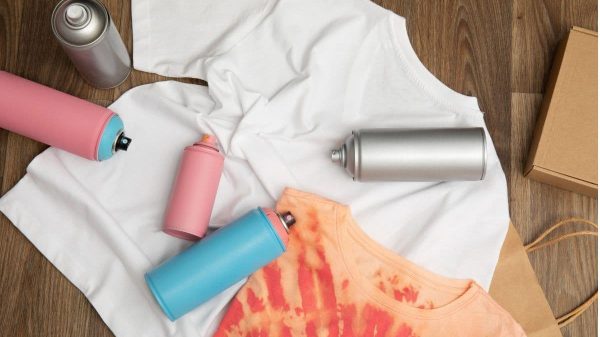Introduction
A shade cloth is an excellent way to create a comfortable outdoor space by blocking excessive sunlight while allowing airflow. Whether you’re installing it over a pergola, greenhouse, or patio, the key to a successful setup is ensuring the shade cloth remains tight and secure.
Many people struggle with sagging shade cloth, which not only looks untidy but also reduces its effectiveness. If you’ve been wondering how to get shade cloth tight, this guide will take you through expert techniques to achieve a firm and long-lasting installation.
Why Is It Important to Keep Shade Cloth Tight?
Before we get into the details of how to get shade cloth tight, let’s discuss why tension matters:
Prevents Sagging & Flapping
Loose shade cloth can flap excessively in the wind, leading to damage over time. Learning how to get shade cloth tight during installation ensures durability and prevents such issues. A tight installation keeps the fabric in place and protects it from wear and tear.
Enhances Aesthetic Appeal
An adequately stretched shade cloth looks professional and enhances the appearance of your outdoor space. Knowing how to get shade cloth tight ensures that your installation remains neat, tidy, and visually appealing, adding value to your environment.
Improves Functionality
A tight shade cloth provides maximum sun protection and maintains airflow without obstructing ventilation. Understanding how to get shade cloth tight guarantees it will function efficiently, offering optimal shading while still allowing for air circulation.
Increases Longevity
By reducing fabric movement, you minimize wear and tear, extending the lifespan of the shade cloth. Proper tensioning is key to how to get shade cloth tight, which not only enhances its performance but also ensures it lasts for years to come.
Now that we understand its importance let’s explore how to get shade cloth tight using expert-recommended techniques.
Step-by-Step Guide: How to Get Shade Cloth Tight
1. Choose the Right Shade Cloth Material
The type of shade cloth you select plays a crucial role in how to get shade cloth tight. A fabric that doesn’t stretch or tear easily will provide more stability over time.
Knitted vs. Woven Shade Cloth:
Woven shade cloth is extra stretch-resistant, while woven fabric is more rigid and requires extra reinforcement to keep it tight.
UV-Stabilized Material:
A high-quality UV-resistant fabric prevents premature deterioration, ensuring the shade cloth stays tight longer.
Weight & Density:
Heavier fabrics maintain better tension, which is essential when trying to get shade cloth tight without it sagging.
2. Measure & Cut the Shade Cloth Properly
One of the most common mistakes in shade cloth installation is improper measuring. If you don’t measure correctly, you’ll struggle with how to get shade cloth tight. Here’s how to avoid that:
Measure the area where you’ll install the shade cloth carefully.
Cut the fabric slightly larger than needed to allow for tensioning adjustments.
Use a hot knife or sharp scissors to prevent fraying and to ensure the fabric fits snugly and stays tight.
3. Reinforce the Edges for Extra Strength
Shade cloth edges are prone to tearing if not adequately reinforced. Strengthening the edges helps you get shade cloth tight and prevents the fabric from loosening over time.
Use reinforced tape or double-stitched hems to add durability.
Install grommets or eyelets along the edges to make securing easier and ensure a firm fit to keep the cloth tight.
4. Select the Best Fastening Methods
Using the proper fasteners is critical when learning how to get shade cloth tight. The best fasteners ensure that the fabric stays secure and tensioned correctly.
Turnbuckles & Tensioners:
These help you gradually increase tension after installation to ensure the cloth stays tight.
Shade Cloth Clips:
Designed to have a firm grip on the fabric without causing damage, these clips keep the cloth securely in place.
Cables & Wires:
Running a strong cable along the edges distributes tension evenly, ensuring your cloth stays tight and secure.
5. Secure the Corners Firmly
Corners bear the most stress, so ensuring they are securely fastened is key to how to get shade cloth tight. Without proper corner reinforcement, the fabric will sag or loosen.
Attach corner brackets or reinforced D-rings to secure the corners.
Use heavy-duty zip ties or ratchet straps to tighten the corners and maintain tension.
6. Stretch the Cloth Evenly During Installation
When installing the shade cloth, ensure you stretch it evenly to maintain tension. The goal is to get shade cloth tight without overstretching it, which could cause damage.
Start at one end and secure it in place.
Gradually stretch the cloth while securing the opposite end to maintain an even pull.
Tighten the sides using tensioners or rope to keep the fabric taut and avoid sagging.
Make final adjustments to ensure an even and firm fit throughout the installation.
7. Check for Wind Resistance
A significant reason shade cloth loosens over time is due to wind pressure. To ensure you get shade cloth tight and prevent wind from loosening it, follow these tips:
Install wind-resistant anchor points to minimize movement and avoid slackening in windy areas.
Opt for mesh shade cloth if your area experiences strong winds, as it is less likely to flap or lose tension.
8. Regular Maintenance & Adjustments
Even after securing the shade cloth tightly, regular maintenance is essential to keep it tight for a long time. Here’s how to maintain it:
Inspect the fabric every few months for any loose areas.
Adjust the tensioners if needed to ensure the fabric stays tight and doesn’t sag.
Replace worn-out fasteners before they fail to maintain proper tension.
By following these steps on how to get shade cloth tight, you can ensure that your shade cloth Leftovers are in top condition for years to come.
Common Mistakes to Avoid
Even if you know how to get shade cloth tight, avoiding common mistakes can save you time and effort.
Using weak fasteners – Cheap clips or plastic ties can fail under tension.
Skipping edge reinforcement – Weak edges can cause premature tearing.
Overstretching the cloth – This can lead to damage and reduced lifespan.
Ignoring weather conditions – Wind and rain can loosen the cloth over time.
FAQs (Frequently Asked Questions)
1. Why does my shade cloth sag after installation?
Shade cloth can sag due to improper tensioning, weak fasteners, or fabric stretching. Using turnbuckles and reinforced edges can help maintain tightness.
2. What is the best way to secure shade cloth tightly?
The best method involves using tensioners, reinforced edges, and steel cables for support. This prevents sagging and increases Longevity.
3. Can I tighten my existing shade cloth without removing it?
Yes! You can adjust the fasteners, add extra tensioning devices, or use cable ties to tighten sagging areas.
4. What type of fasteners should I use for a long-lasting installation?
Stainless steel or galvanized turnbuckles, D-rings, shade cloth clips, and cable wires are the best options.
5. How do I prevent my shade cloth from flapping in the wind?
To prevent flapping, ensure the cloth is stretched tightly and anchored securely. Using wind-resistant designs and additional support cables helps.
6. How often should I check and adjust my shade cloth?
Check your shade cloth at least every 3-6 months and after strong winds or heavy rain.
7. Does shade cloth shrink or stretch over time?
Yes, some materials stretch slightly. Using adjustable tensioning devices helps keep it tight over time.
8. Can I install shade cloth myself?
Yes! With the right tools and techniques, a DIY setup is likely. However, for large or complex setups, professional help is recommended.
9. How do I reinforce the edges of a shade cloth?
Use reinforced tape, double-stitched hems, or grommets to strengthen the edges.
10. What is the ideal tension for a shade cloth?
The cloth should be firm but not overstretched, allowing slight flexibility to withstand wind movement.
Final Thoughts
Now that you’ve learned how to get shade cloth tight, you can confidently install a shade solution that stays secure and lasts for years. By following the right techniques—choosing quality materials, using proper fasteners, reinforcing edges, and maintaining even tension—you can prevent sagging, flapping, and premature wear.
















